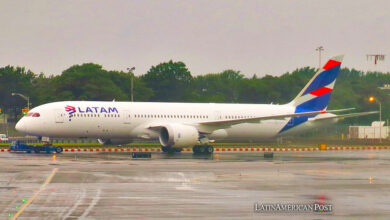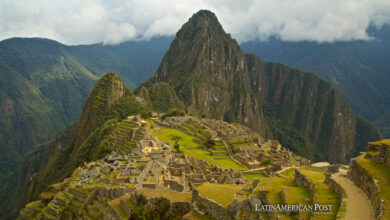Holy Week: Its Importance in the Economy and Tourism in Latin America
The impact of Holy Week is not only cultural. This religious festival favors tourism and the economy of the region.

Photo: Rafael Esteve
LatinAmerican Post | July Vanesa López Romero
Escucha este artículo
Leer en español: Semana Santa: su importancia en la economía y el turismo de Latinoamérica
Holy Week is the most important religious celebration in Latin America. Its cultural impact is present in most regions, where processions, rites, and various festivities are celebrated. This impact has transcended and is reflected in the tourism and economy sectors, which are highly favored and growing increasingly. What's more, after the COVID-19 pandemic, the reactivation of tourism in Latin America, one of the most affected sectors, graced Easter 2022.
The Cultural Importance of Holy Week
The cultural impact of Holy Week in Latin America is very significant. The celebration has its roots in the Catholic religion and has become a cultural manifestation that shows the identity and tradition of each place where it is celebrated. The particularity of Latin America is that these religious manifestations are intrinsically mixed with cultural ones. A great example is the cult in Mexico of Our Lady of Guadalupe, a Marian apparition with indigenous features that account for a Mexican reading of Catholic traditions.
Read also: The 3 best destinations to be a digital nomad in Latin America
This celebration is highly anticipated in Latin America and has been adapted to each region. Everything is part of the local culture, from the costumes and clothing of the participants in the processions to the typical meals served during Holy Week. It becomes a distinctive element of each place.
The sense of belonging to this celebration is so great that today it represents a tremendous economic and tourist impact in most countries in the region.
Impact on Tourism and the Economy
As we previously mentioned, the Easter celebration reactivated tourism in Latin America in 2022. According to ForwardKeys estimates, tourism growth in the region was 230% compared to the figures for the festival reported in 2021. After this reactivation, tourism in the region continued to grow throughout the year, with an overall growth of 63%. This demonstrates the importance of the celebration in the Latin American economy, which largely depends on the tourism sector. According to the IDB (International Development Bank), the region is the one that turns the most on tourism in the world and the one that generates the most employment.
Thousands of tourists worldwide arrive at Easter destinations every year to experience local traditions and customs. Some popular places to celebrate Holy Week are Cusco and Ayacucho in Peru, Taxco and San Miguel de Allende in Mexico, Antigua in Guatemala, Quito in Ecuador, and Nariño in Colombia. This is paradoxical when considering that the figures for Catholicism globally have decreased in recent decades. However, it must be regarded that despite the decrease, this is the religion with the most significant number of followers.
Also, Holy Week is not only seen as a Catholic event but also as a time of rest. There are holidays in several countries in the region, so families take the opportunity to go on vacation. Thus, not only places with religious importance are favored, but also many other tourist destinations in the region. According to data from the different governments that make up the region, more than 60% of travelers will travel for vacation or leisure and not for religious purposes.
Holy Week is not only an opportunity for people to celebrate their faith and show their cultural identity but also for local tourism and economic growth.




